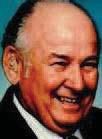
The ever popular peanut
March 3, 2017
Emile Gagneaux
March 7, 2017Louisiana State Police are investigating the fatal shooting of a Houma man by city police last week to determine whether officers acted lawfully, as his family grieves and raises questions nobody yet has answers to.
No information has surfaced to suggest criminal wrong-doing on the part of officers, which is what the State Police probe is limited to.
But the case raises important questions about the Houma Police Department’s failure to communicate initial information, despite a marked trend toward increasing transparency in such situations nationally, and a local track record of open communication in the past.
Experts in law enforcement crisis communications maintain with uniformity that local police departments must have such protocols in place. The ubiquitous nature of social media allows misinformation to spread rapidly if facts – or such facts as can be reasonably released – do not fill the information vacuum.
“Withholding necessary infor-
mation undermines trust in the community,” said Stephen Handelman, director of the Center on Media, Crime and Justice at John Jay College of Criminal Justice in New York City, a think tank devoted to developing and encouraging high-quality reporting on criminal justice and law enforcement.
What has been confirmed with the State Police is that Houma officers were called to 154 Agnes St. at around 7 p.m. Feb. 28, Mardi Gras Day, regarding a disturbance. Police encountered a barricaded 43-year-old Jose Olivares.
For reasons that are not explained in any of the sparse information released, Olivares was shot and killed. Reporters have pieced together a mosaic, relying largely on accounts from witnesses and family members, as well as anonymous law enforcement sources, to fill the void.
Early news reports about the case did not include key information, of the type media experts familiar with law enforcement need in crisis situations say would not have interfered with the ongoing investigation, but which are needed to maintain trust, and to lay a foundation for information that will eventually come be disclosed in greater detail.
Among important elements missing from public statements, confirmed through interviews with law enforcement officials who could not be publicly identified, as well as with Olivares’ loved ones:
* Olivares was armed with a shotgun
* Blasts were fired from inside the trailer toward the outside.
* At least two police officers were hit by shot during the incident.
* Less-lethal options were used in an attempt to contain and control Olivares.
* Police negotiators may have spoken with Olivares by telephone, a point disputed by family.
Although it has not made its way to social media, cell phone video of the shooting is allegedly in the hands of one family member.
“I called the Sheriff’s Office and his mom called the police and I think his cousin Destiny called the cops,” said Roxanne Griffin, who identified herself as Olivares’ girlfriend of three years. “He was flipping out. He had got like that before.”
Olivares, Griffin and relatives said, had not taken prescribed psychiatric medication for about a month.
Earlier in the day Olivares and Griffin had attended the Krewe of Houmas Mardi Gras parade with Griffin’s children. They caught the parade near Stadium Drive, then moved on to catch it again on Barrow Street, near NAPA auto parts. Olivares was initially in fairly good spirits, Griffin said, drinking Heineken beers and Jell-O shots.
They left the parade route early, however, dropping off the children with relatives.
“Then when we got back in the vehicle he started talking about his mom who passed away and said ‘I want to be with my mom,'” Griffin said.
By the time he got to the trailer Olivares’ distress continued, Griffin said, adding “his father came to check up on him.”
Born in Galveston, Olivares has lived in Houma, Dulac and Michigan, has no history of having been incarcerated at the Terrebonne Parish jail.
“Joe was awesome,” Griffin said. “He loved me and loved my kids.”
Family members were trying to make sense of being in the uncomfortable position of calling for help because they fear for the safety of a disturbed loved one, only to have the call for help have a fatal result.
“They were only called because we thought that they could help not kill him,” said a cousin, Lawanda Lynn Ray. “He was not trying to harm anyone, he never threatened them, he was depressed and then got scared when they surrounded the house and put snipers up. He was scared.”
Ray’s contention was present in a Times story within a day of the shooting. Crucial details including the fact that officers were hit by shot were not confirmed – and then only with police sources needing to remain anonymous – on Monday.
Police Chief Dana Coleman was contacted by The Times by text at 9:21 p.m. on Feb. 28, about an hour after the shooting.
He confirmed that an individual had been killed. In response to a question as to whether officers were “okay” he responded in the affirmative. A short time later, in response to deeper questions, Coleman said the case had been turned over to the Louisiana State Police and that they would answer all questions.
A State Police spokesman, Trooper Jesse LaGrange, issued a statement reading “this is an active investigation and our investigators and crime lab will ensure that all the facts are gathered. Once the investigation is complete, the findings will be turned over to the Terrebonne Parish District Attorney’s Office.”
The name of the officer who did the shooting, along with in-
Jose Olivares and his daughter, Osanna Craig-Olivares. Olivares was shot and killed by Houma police Feb. 28.
Jose Olivares, who died after a barricade incident in Houma Feb. 28. Those close to the man say he enjoyed fishing and also being next to his loved ones. The investigation into the shooting is still ongoing.











